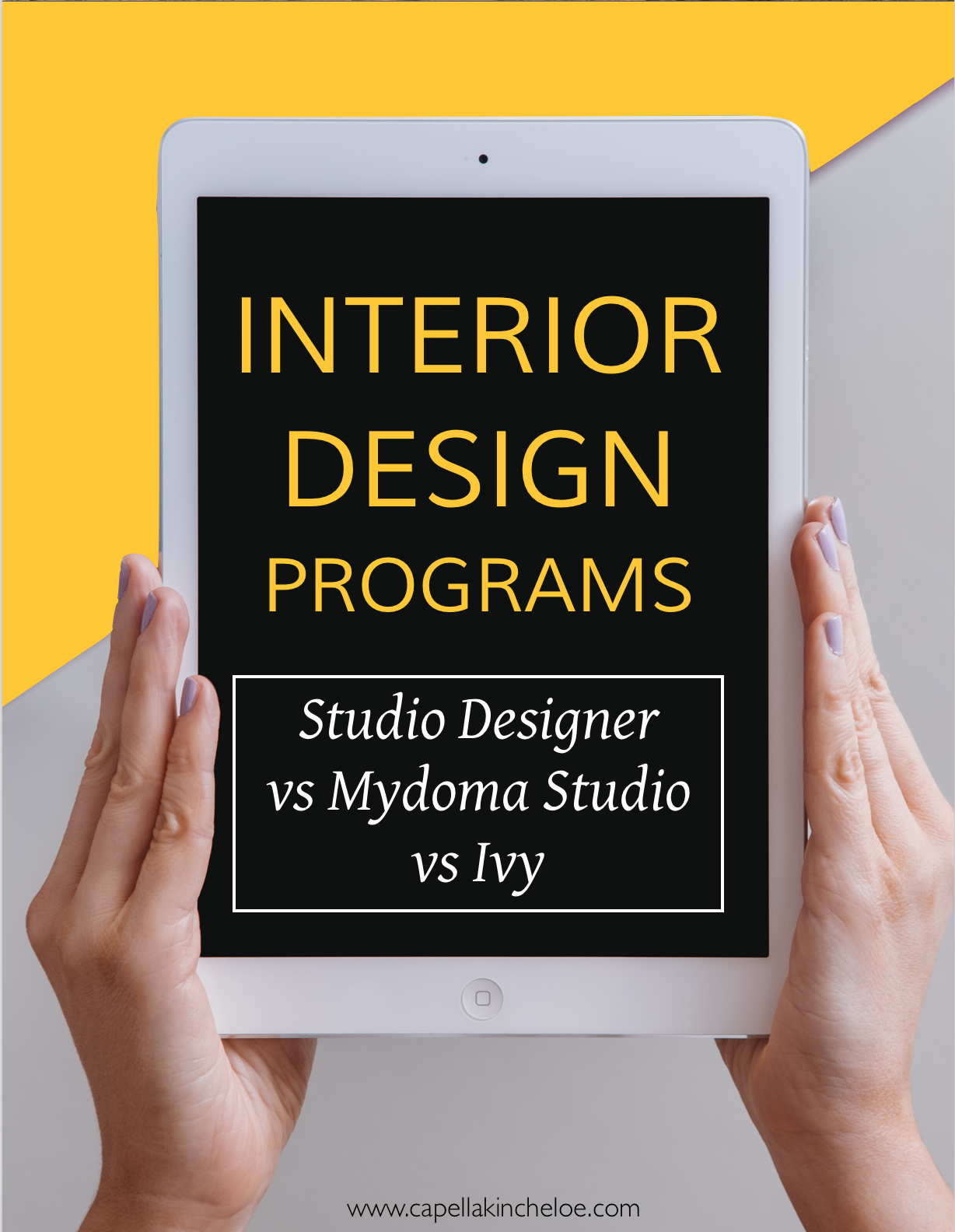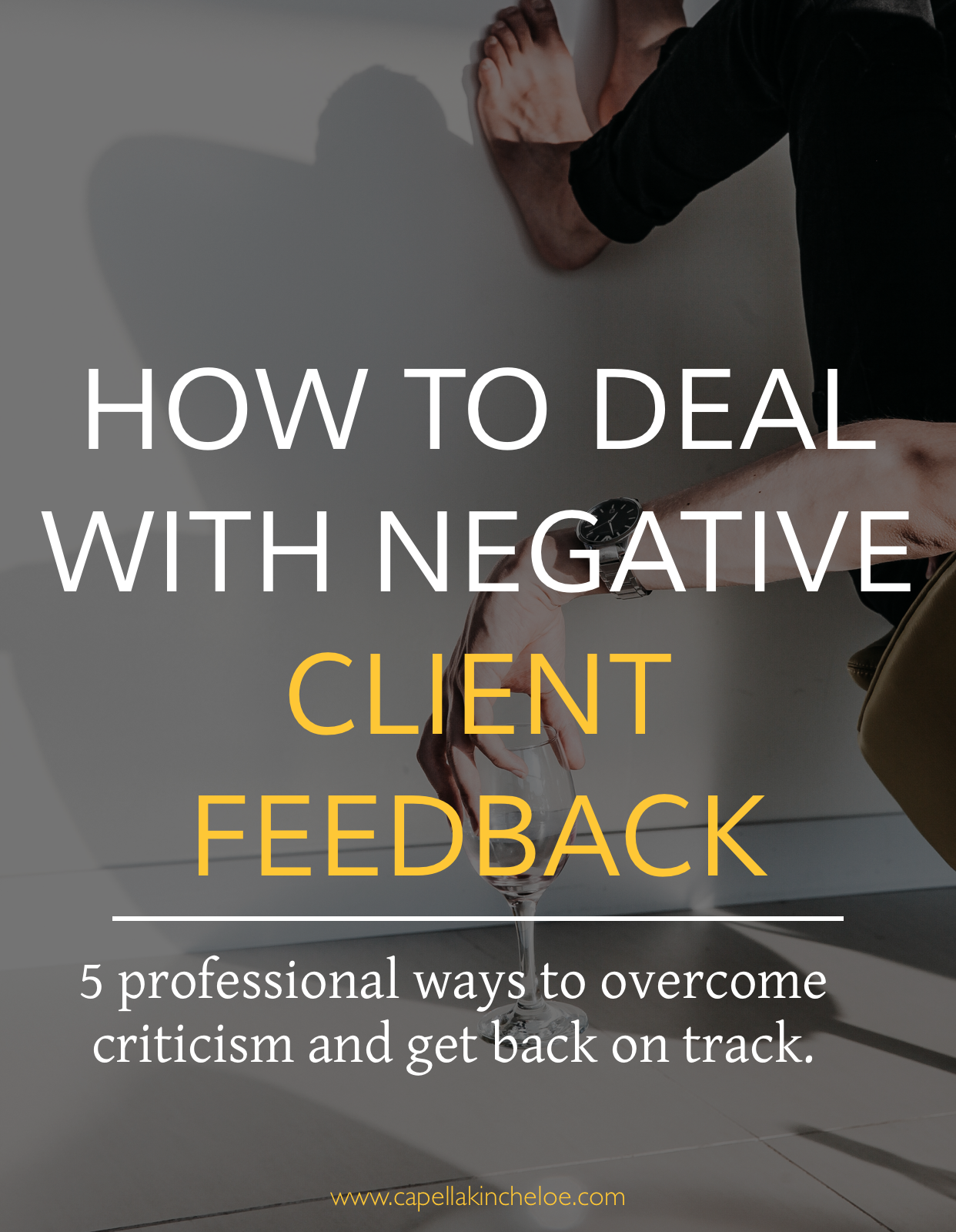Sometimes you begin a project and a few weeks or months down the road you realize this isn't the project for you. Something isn't right, maybe there are red flags, maybe you have too much on your plate, maybe the client is Dr. Jekyll and Mr. Hyde. There are many great reasons that you should get out of a project. And it is perfectly okay to get out of a project. But, getting out of a project shouldn't be a decision taken lightly. You want to honor your commitments, just not at the expense of your personal well-being.
Read MoreHere is a secret from my business: I don't meet with potential clients unless I first have an idea of their budget. I don't need a spreadsheet with every penny accounted for (In fact, I really don't want that!) but I do need a starting number that they feel comfortable with.
Here is another secret to getting this number: You ask. Then if they don't know (many don't and this is okay!) then prob further. Keep asking in different ways to get a number from them. Don't waste their time or your own entertaining a project that is an impossible budget. Usually there are two types of clients, those that have a number but don't want to share it because their afraid you'll abuse their money. Or they really have no idea what it should cost. If you're lucky you'll get a client that has an appropriate budget. If you're unlucky you could get a client that has an unreasonable budget.
Read MoreSo many times after a project sours designers tell me that there were red flags from the get-go. So the good thing is that potential clients will usually reveal from the start that they're not the right clients for you.
Too often designers, especially new designers, are so eager for work and to get hired that red flags are ignored or they don't know what to look out for. In the beginning, there are a few areas that you should consider before accepting and moving forward with a project.
Read MoreI see this question a lot. So I'm going to share with you how I handle returns. Remember, this is how I do it, that doesn't mean that it is the right way to handle it for your business. It's just one way to do it.
The first thing you need to do is accurate set up your client's expectations. This means that you put a refund policy in your contract, not only for product and orders, but also for the markup on that product, for your time procuring and expediting that product, shipping and freight fees, install costs, and restocking fees.
Read MoreI've written many articles on pricing and created a free course to help designers figure out their sweet spot. I thought I could round them all up for you in one convenient place. Want to get really clear on what works for me and what I've seen work for other designers? Read the articles below.
Click Read More to Get 10 of the Best Articles on Pricing Interior Design
Read MoreAt the end of my course, The Golden Blueprint, I do review calls with participants. In the last session of the course I had several review calls every day and I found myself giving the same advice most every call. So what was the question that everyone was asking about? Pricing. Or more specifically, how to make money as an interior designer.
We would talk about how they priced their services and how they charged their clients and ultimately there was one glaring mistake everyone was making in their design business that was costing them valuable income.
Read MorePsst. Designer. Do you want to hear the biggest trade secret of all time? You can't share it with anyone. If I tell you, you are sworn to secrecy. Other designers will ask. Don't tell them. This is just for you. I'm going to give you the Super Secret Magic Pricing Model. MPM for short.
I'm sure you know the Magic Pricing Model I'm talking about. The one where clients readily accept your fees and buy all the product you select without question. It is the one where your bills and invoices are always paid on time. The one where you make a ton of money easily. It is the one that is so easy you never have to have an uncomfortable conversation about money with clients. The MPM is the one that you make the most amount of money with the least amount of effort. I know you want it. Everyone wants it.
Read MoreLet's go back to a time pre-internet. Cue the fog and crackly old-time radio. Generally, the wealthy were the only ones who could afford to hire a decorator. HGTV didn't exist. Correspondence was done via letter or the phone. Orders were placed with checks. Cell phones didn't exist or were giant bricks kept in the car "for emergencies". Shopping was all done in-store or from a mail-order catalog, you had to literally mail-in or call in your order. Things that couldn't be sourced would be designed and custom made in a workroom. Clients had no access to trade-only sources.
Read MoreWhen you discount your services, you are undercutting the value of the entire industry. Ever bought a Groupon for a discounted exercise class, but then never went again for full price? If you pay less for something it is really hard to fork over more money later. When you lower the price of something, it sets a precedent and people don't want to pay more for it. The perceived value goes down. This may not matter when you are first starting or if you are in a slump and need whatever clients you can get, but it will matter when you are wanting to get paid more for your services or want to work on higher budgets. It also matters to all the other designers out there working their butts off and growing their businesses.
Read MoreToday, I am going to talk about two newer interior design programs on the market and my tried and true. This month I spent some time researching and playing around with Ivy and Mydoma so I could report back my findings to you because we are always trying to make business easier and more efficient.
There are pros and cons to each program and unfortunately, there is no definitive answer as to which one is "best". They all are very good options, you'll want to pick the one that works best for running your business.
Read MoreGetting negative feedback from a client is inevitable. Let's just get that out of the way: you are going to get negative feedback and so is every other interior designer out there. You're not alone. But sometimes it feels like you're alone if you hear anything but rave reviews. It can feel like a giant spotlight is on you. Or like it is written on your face and everyone knows. But none of this is true.
Sadly, negative feedback will probably stick with you much longer than the rave reviews. At least it does for me. In a way, I think this is because we don't expect our clients to have criticism. We expect our clients to love the work we've done for them. This kind of feedback can make you question your talent and maybe even question why you are in interior design.
Read MoreYou very rarely hear about design from the design client unless it is in a shelter magazine or a bad review online. But there are thousands of experiences in between. Here is a perspective of different projects through the eyes of a client and the value they see in interior design. This series is to help other designers understand design clients better and for clients to see the value of interior design.
What made you decide to hire a designer?
I had to get very honest with myself about how I wanted to spend my time. While I love looking at furniture and everything related to homes and decorating, it is an entirely different process to have to shop for a room full, or a home full, of furniture, rugs, art and accessories. Even if you don’t mind the amount of time and energy it takes to do that amount of running around, I think you have to ask yourself if you have that very specific skill set
Read MoreMany of you have expressed the desire to get away from Home Goods crowd and start mingling more with the Baker crowd. I believe that you need to earn your right to charge your clients for premium pricing by delivering a premium product and service to your clients.
Much of the ability to charge premium pricing is in appearances. It is best to offer premium products/services from the get-go than to try to climb your way up the price ladder.
You may want to consider the following factors in rebranding your company to attract more premium customers.
Read MoreThe past few articles I've written have been about pricing and adding value to your business so that you can charge what you're worth.
But sometimes you actually need to turn down money to make money. By saying no to the wrong projects you open yourself up to the right projects. And we know that like attracts like, so the right projects will attract more of the right kind of projects.
Not only will you attract more projects that are the right projects, but by turning down projects you strengthen the muscle of saying no and trusting your instincts.
There are only two reasons to turn down money for a design project. Ultimately, it comes down to:
Designers, if you've been around for any period of time, you've probably heard that you shouldn't discount your services. When you discount your services you create the perception that what you're offering is worth less and it's hard to go back to normal pricing. This is because of value perception.
Therefore, it can be harmful to the design industry when a designer undercharges because it decreases value perception.
The interior design service industry has suffered from a value decrease in the past 15+ years, while the interior design DIY industry has boomed. And this is precisely what interior designers are struggling with now, how to demonstrate value in their services when clients have been exposed to things like Home Goods and HGTV.
Read MoreAs more and more of the world becomes digital, whether or not to take credit card payment has become a hot topic for interior designers.
For me, taking credit card payments has always been off the table, mainly for one reason: disputes. It is easy to dispute a charge with your credit card company for really any reason and this can cost the designer time and money to prove the charge. For me, it has been best to create a blanket policy of checks or cash only.
However, since I started my business, taking credit cards has become much simpler for small business owners with services such as Square and Payscape-Studio Webware integration. It is also quicker.
Read MoreOne of the biggest challenges facing interior designers today is getting shopped by clients. This means that a designer proposes an item to a client, only to have them find that same item cheaper somewhere else.
I hear designers encountering this with clients all the time. But getting shopped by clients is not going to go away because I'm pretty sure the internet is here to stay. It is human nature to want the best price and the best deal and the internet makes that a lot faster and easier.
So what should we do about the inevitable? Here are some options and ideas to help you overcome this challenge.
Read MoreThere are many great reasons that you should turn down a project. And it is perfectly okay to turn down a project. We don't have to please everyone. You want to pick projects that you love, that give something back to you, not drain you. Here is how to politely say no.
Read MoreDo you ever find yourself venting about your clients? Do you find yourself complaining that they found that chandelier cheaper after you emailed a tear sheet? Have you ever lamented that they changed their minds after touching, approving, paying, and installing the rug?
While client woes are all part of the job, there is a fine line between normal complaints and downright hostility.
And lately, I have seen too much hostility towards clients and what has started to feel like a battleground.
Read MoreSigning clients shouldn't be hard. Learn how to sign more clients.
Wouldn't it be amazing if more of your inquiries ended up as signed clients?
Wouldn't it be great if you had to do less work to get your ideal clients to call you?
How about if they were practically ready to sign before your first meeting?
Read More




















